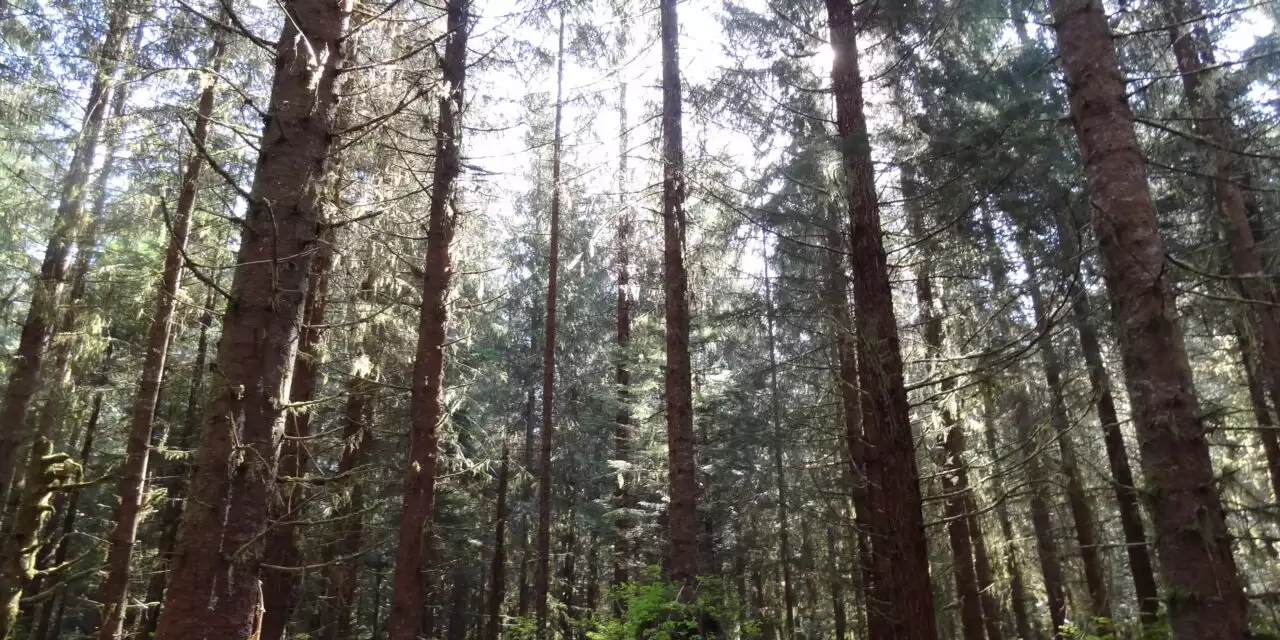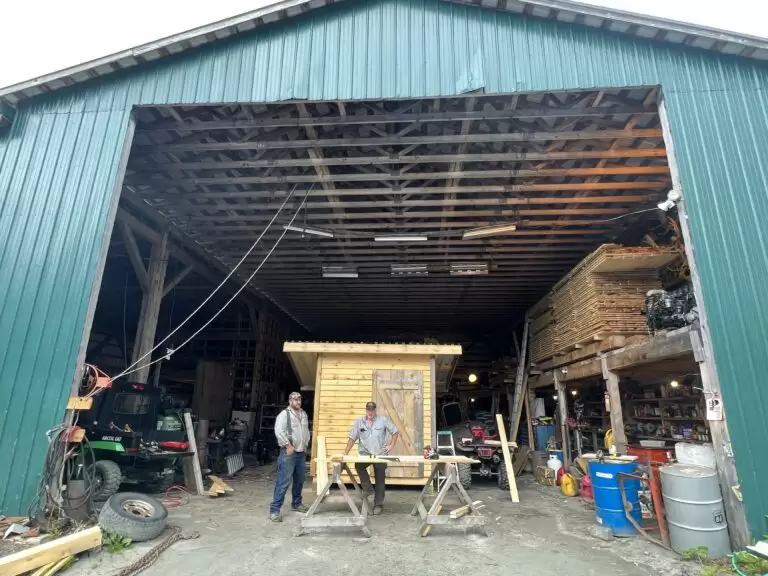
The U.S. Forest Service awarded grants this summer that could help revitalize the logging industry in the Tongass National Forest. Two businesses in Southeast Alaska have received hundreds of thousands of dollars to retool their mills, which could help tackle housing shortages in local communities.
If you head up Falls Creek in Petersburg, you’ll hear Brett Martin before you see him. Martin runs Alaska Timber & Truss with his business partner, Mike Duman. They bought this old mill up here last year. And Martin knows it inside out — or, nearly inside out.
“[There’s a] John Deere skidder in the back here, it’s a 540B, I believe,” Martin said. “There’s a chainsaw grinder there. Uh, there’s the cat.”
“What’s the cat called?” a reporter asked.
“Uh, Meow?” Martin said. “I don’t know! What is the cat’s name?” he turned and asked Duman.
This mill is about to be refurbished. It’s one of just two in Alaska, along with JK Forest Products in Thorne Bay, to be awarded Forest Service grants to upgrade its saw. Martin and Duman were given $300,000 for a small log sawmill upgrade.
But this money isn’t just for buying fancy new machinery. The plan is pretty ambitious — to breathe new life into a lagging industry and slash the cost of timber for local communities.
What these upgrades have in common is that they are designed to process younger trees. In the Tongass National Forest, which covers most of Southeast Alaska, trees can be sorted in two categories, old growth and young growth.

Sheila Spores is the deputy forest supervisor. She said there’s a big difference.
“Old growth is forest that’s never been managed before,” said Spores. “Between the ages of 206 to 600 — it’s old forest. And then young growth forest is forest that has been harvested and is now a new, young forest.”
Political warfare has raged for years about how old growth and young growth can be logged in the Tongass. The latest ruling came a few years ago.
“So, in 2021, the Forest Service capped the amount of old growth that could be harvested from the Tongass in any given year at 5 million board feet,” said Spores. “Then that means there’s 41 million board feet of young growth.”
But Spores said the demand for young growth doesn’t come close to that. Most of the small mills that are still operating in Southeast are all focused on old growth.
Karen Petersen is from the Southeast Conference, a regional economic development organization. She said one of the reasons is simple: equipment.
“Why small mills focus on old growth is primarily because their saws are set up to mill old growth,” said Petersen.
Petersen said new tools will make these mills more competitive.
“I’m pretty excited about seeing all of these small sawmills change their milling capacity,” said Petersen. “Because they’re going to be able to enter into a market that right now is capitalized by only the sawmills out of the Lower 48.”
Dominick DellaSala is chief scientist at the conservation group Wild Heritage. He’s studied the Tongass for four decades. So you might be a little surprised that DellaSala would support any type of logging.
“Young growth doesn’t have nearly as much biodiversity importance,” DellaSala said. “It doesn’t have nearly as much carbon built up in the trees, because there’s just not the big old growth trees there.”
Many people believe all forms of logging come at an environmental cost — but DellaSala believes there’s another way.
“You know, we need timber and we can be smarter about where we get it from, how we do it,” he said. “So it’s bio-regionalism, it’s just like growing your food in a region is going to reduce your emissions from transport.”
Over in downtown Petersburg, you don’t have to go far to find support for locally-sourced timber.
Bennett McGrath runs Anchor Properties, a local real estate agency.
“There’s great demand for timber in this town because there’s a lot of vacant properties or land that people want to build on,” said McGrath. “And they just can’t because the cost of barging up timber is cost prohibitive for them.”
McGrath said nearly all construction timber has to be shipped up from the Lower 48.
“Why bring sand to the beach when we have it here?” asked McGrath. “It would be a cost savings, a significant cost savings, like, possibly 20% below market value.”
Back at Falls Creek, Martin and Duman say their biggest challenge is supply
“If we can get a combination of timber between the borough, the state and the Forest Service, with that I think we can actually get enough supply to keep up steady moving forward,” Martin said. “But If we can’t get the wood, there’s no point in having a mill.”
Editor’s note: Bennett McGrath is a KFSK board member.




